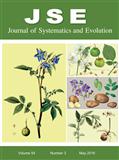Li-Na Sha, Xing Fan, Hai-Qin Zhang, Hou-Yang Kang, Yi Wang, Xiao-Li Wang, Xiao-Fang Yu, Yong-Hong Zhou
The level and pattern of nucleotide variation in duplicate genes provide important information on the evolutionary history of polyploids and divergent processes between homoeologous loci within lineages. Leymus, a group of allopolyploid species with the NsXm genomes, is a perennial genus with a diverse array of morphology, ecology, and distribution in Triticeae. To estimate the phylogeny and molecular evolution of a single-copy DMC1 gene in Leymus and its diploid relatives,DMC1 homoeologous sequences were isolated from the sampled Leymus species and were analyzed with those from 30 diploid taxa representing 18 basic genomes in Triticeae. Sequence diversity patterns and genealogical analysis suggested that: (i) different Leymus species might derive their Ns genome from different Psathyrostachys species; (ii) Pseudoroegneria has contributed to the nuclear genome of some Leymus species, which might result from recurrent hybridization or incomplete lineage sorting; (iii) the Xm genome origin of Leymus could differ among species; (iv) rapid radiation and multiple origin might account for the rich diversity, numbers of species, and wide ecological adaptation of Leymus species; and (v) the DMC1 sequence diversity of the Ns genome in Leymus species was lower than that in the Psathyrostachys diploids, while the level of DMC1 sequence diversity in Leymus was higher than that in diploid Pseudoroegneria. Our results provide new insight on the evolutionary dynamics of duplicate DMC1 genes, polyploid speciation, and the phylogeny of Leymus species.

